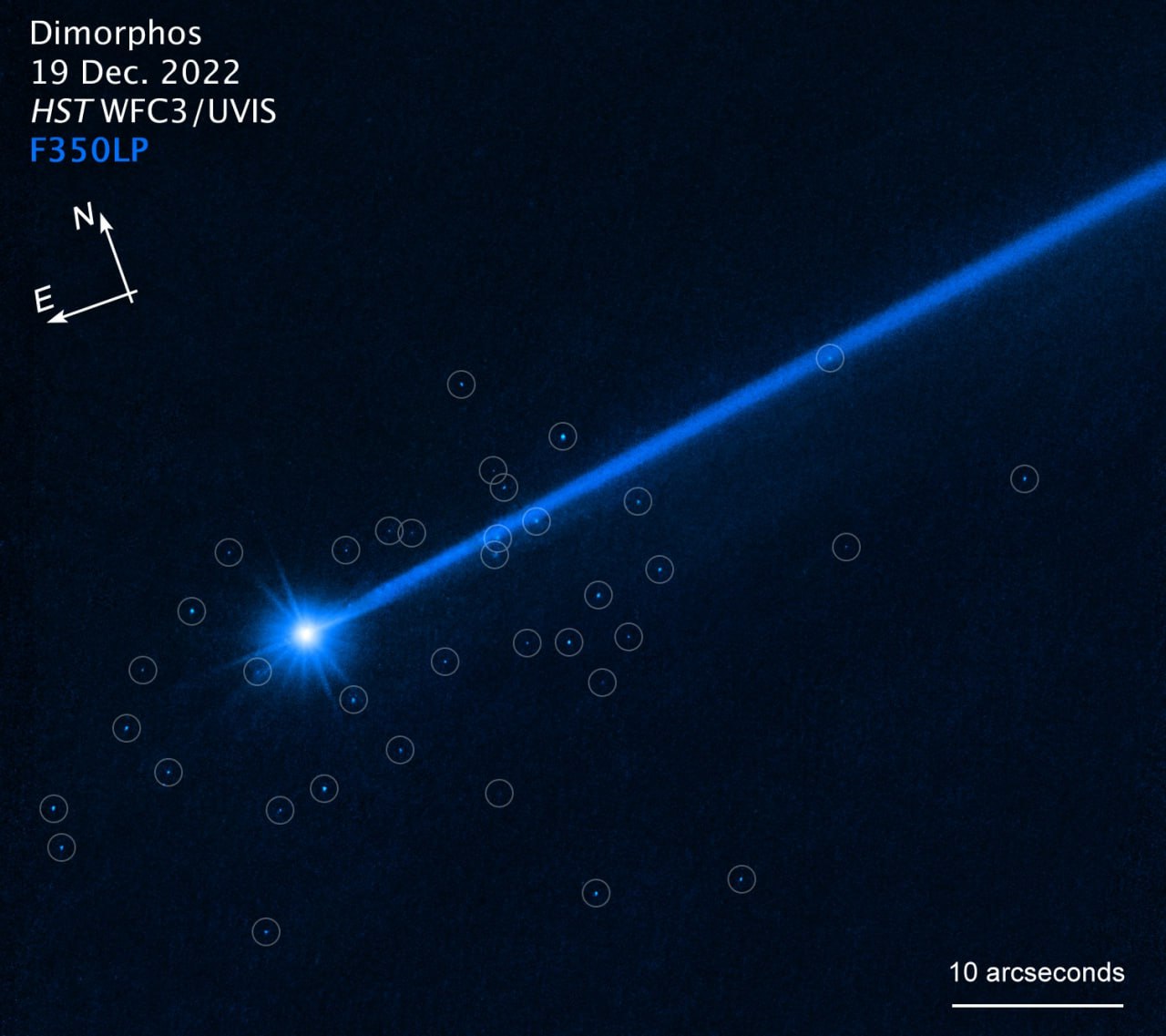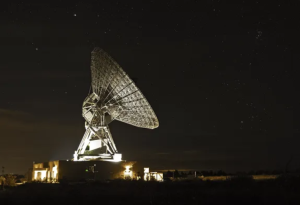Hubble discovers 37 boulders near Dimorphos likely from DART crash
25th Jul 2023
The Hubble Space Telescope has just discovered 37 boulders likely shaken off from the Dimorphos asteroid that was crashed into by the DART spacecraft last year. NASA and the European Space Agency (ESA) telescope, which has been orbiting for over 30 years, found the swarm of boulders moving away from the asteroid at around one kilometer per hour, proving it is possible the objects could have come from Dimorphos. Wherever the boulders are from, ESA says the planetary objects are some of the “faintest objects ever imaged in the Solar System”.
What Hubble found
Through the Hubble telescope’s “extraordinary sensitivity”, it found boulders that likely were shaken off Dimorphos after the Double Asteroid Redirection Test (DART) impact, according to ESA. Dimorphos is the orbiting moonlet of the 65803 Didymos binary system, and in September 2022, NASA sent a spacecraft to crash into the planetary body to test whether it shifted its orbit around its parent body. Its purpose was to determine if this type of impact could be a tactic of planetary defense against potential dangerous asteroid collisions with the Earth.
The 37 boulders ranged in size from one meter to 6.7 meters across, based on Hubble’s photometry, and the total mass of the objects make up 0.1% of the mass of Dimorphos. Hubble’s estimates showed that the impact likely shook off 2% of the boulders on the asteroid’s surface.
“The boulders are most likely not shattered pieces of the diminutive asteroid caused by the impact,” ESA explained in its press release, published on July 20th. “They were already scattered across the asteroid’s surface, as evident in the last close-up picture taken by the DART spacecraft just two seconds before collision, when it was only 11 km above the surface.”
DART – an intentional interplanetary crash
The DART mission was one of the most exciting missions from the past few years, seeing NASA develop a spacecraft to intentionally crash into a million pieces.
On 26 September 2022, the spacecraft crashed head-on with 160-meter-wide Dimorphos, flying towards it at approximately 22,500 kilometers per hour. Dimorphos orbits Didymos 6.7 million miles from Earth, meaning DART took ten months to reach its target, after launching on 23 November 2021.
While the spacecraft was completely ruined, it completed what it sought to do – Dimorphos’ orbit around Didymos shortened by 32 minutes, proving to be a successful deflection.
Hubble findings to help post-DART survey
Following the crash by DART, ESA’s Hera mission will make the first post-impact survey of Dimorphos. The small spacecraft is set to launch in October 2024, for a December 2026 rendezvous with Dimorphos.
Hera will complete a detailed study of the impact DART had on Dimorphos, and help scientists understand how to make a future kinetic impact more effective.
The new discovery by Hubble opens up a “new dimension” for studying DART’s aftermath, ESA said.







Thank you for your comment! It will be visible on the site after moderation.